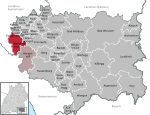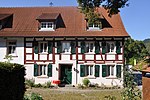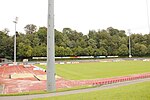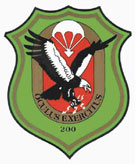The Battle of Ostrach, also called the Battle by Ostrach, occurred on 20–21 March 1799. It was the first non-Italy-based battle of the War of the Second Coalition. The battle resulted in the victory of the Austrian forces, under the command of Archduke Charles, over the French forces, commanded by Jean-Baptiste Jourdan.
The battle occurred during Holy Week, 1799, amid rain and dense fog. Initially, the French were able to take, and hold, Ostrach and the nearby hamlet of Hoßkirch plus several strategic points on the Ostrach marsh. As the engagement began, Habsburg numerical superiority overwhelmed French defenses. By evening, the French left wing was flanked and Jourdan's men retreated from Ostrach to the Pfullendorf heights. On the next morning, as Jourdan considered a counter-attack, the weather broke, and he could look down on the Austrian battle array. The numbers and dispositions of the Austrians convinced him that any attack would be useless, and that he could not hope to maintain his position in the heights. As he withdrew, a portion of his right flank was cut off from the main force.
Although casualties appeared even on both sides, the Austrians had a significantly larger fighting force, both on the field at Ostrach, and stretched along a line between Lake Constance and Ulm. French casualties amounted to eight percent of the force and Austrian, approximately four percent. The French withdrew to Engen and Stockach, where a few days later the armies engaged again, this time with greater losses on both sides, and an Austrian victory.








